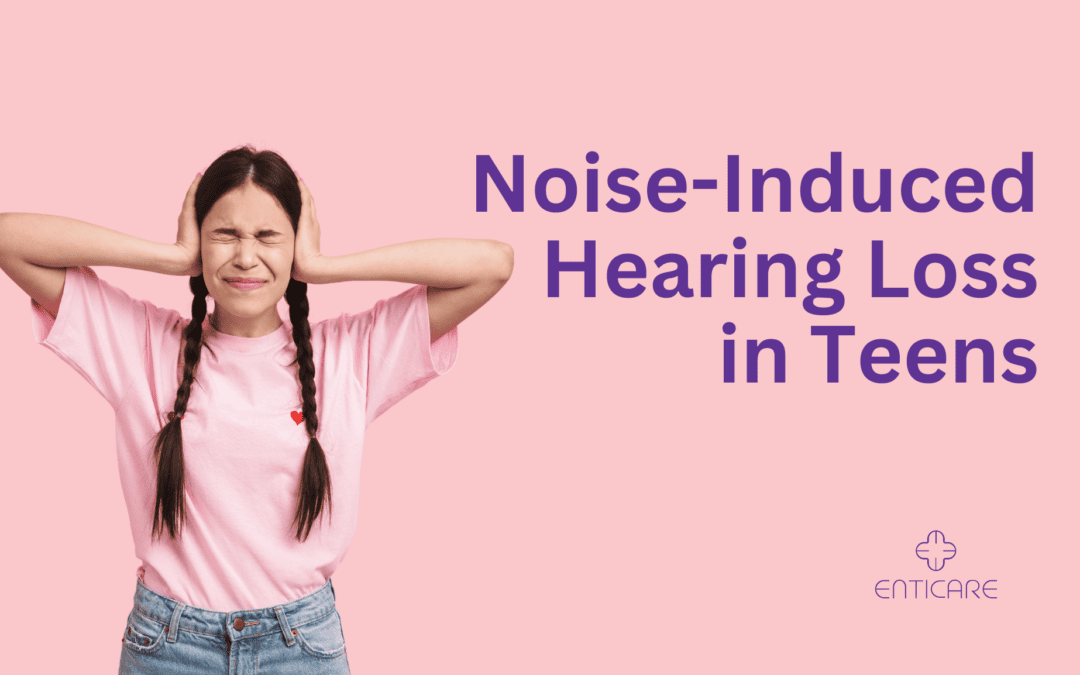In the symphony of modern life, where sound surrounds us at every turn, a growing concern often goes unnoticed — noise-induced hearing loss (NIHL) in teenagers. The beats of their favorite tunes, the buzz of social gatherings, and the roar of live concerts may seem harmless, but the decibels add up, silently impacting the auditory health of our younger generation due to harmful noise.
Understanding the Decibel Dilemma
In this tech-savvy era, personal audio devices are a teenage staple. From earbuds to headphones, the allure of immersive sound experiences comes at a cost. The volume levels at which many teens listen to music can reach hazardous levels, contributing to the alarming rise of NIHL.
The thrill of live music at concerts and events, a rite of passage for many teenagers, often involves exposure to excessive loud sound. Repeated exposure to these environments can significantly contribute to the risk of noise-induced hearing loss. Even everyday social settings, such as busy restaurants and gatherings, contribute to the constant hum that surrounds them. Even temporary hearing loss can occur after attending a loud event, which may resolve within a few days but still indicates underlying damage.
The American Speech-Language-Hearing Association emphasizes the importance of recognizing these everyday scenarios as potential threats to auditory health.
The Invisible Damage of Noise-Induced Hearing Loss
Unlike a visible injury, the damage caused by excessive noise is insidious. NIHL is a cumulative condition, with each exposure to loud noise contributing to overall damage, particularly to the hair cells in the inner ear. The effects are often unnoticed until they become permanent, affecting academic performance and social interactions.
Exposure to loud sounds can also damage the middle ear, leading to severe hearing loss. The National Institute on Deafness and Other Communication Disorders highlights the progressive nature of NIHL and the irreversible impact it can have on the delicate structures of the inner ear. The effects are often unnoticed until they become permanent, affecting academic performance, social interactions, and causing trouble hearing in noisy environments.
Preserving Auditory Well-Being
Preventing noise-induced hearing loss is not an insurmountable challenge. It begins with awareness and practical steps that teens can incorporate into their daily lives.
-
- Volume Control: Encourage teens to adopt responsible listening habits, keeping the volume on personal audio devices at moderate levels.
- Protective Gear: In noisy environments, the use of hearing protection devices such as earplugs or noise-canceling headphones can be a simple yet effective measure to safeguard hearing.
- Wearing hearing protection in loud environments, such as concerts or sporting events, can significantly reduce the risk of developing NIHL.
- Educational Initiatives: Schools play a crucial role in raising awareness about the risks of excessive noise and promoting the importance of hearing protection.
The World Health Organization’s “Make Listening Safe” campaign provides valuable resources on safe listening practices.
As parents, educators, and influencers, we have a collective responsibility to guide teenagers toward healthier auditory habits and protect hearing. Turning down the volume while fostering an environment where the enjoyment of music goes hand in hand with preserving hearing is a step in the right direction.
If you’re concerned about the hearing health of your teen or have questions about noise-induced hearing loss, take action now. Contact Enticare to determine the best course of treatment for your case. Don’t hesitate to call us at 480-214-9000.

